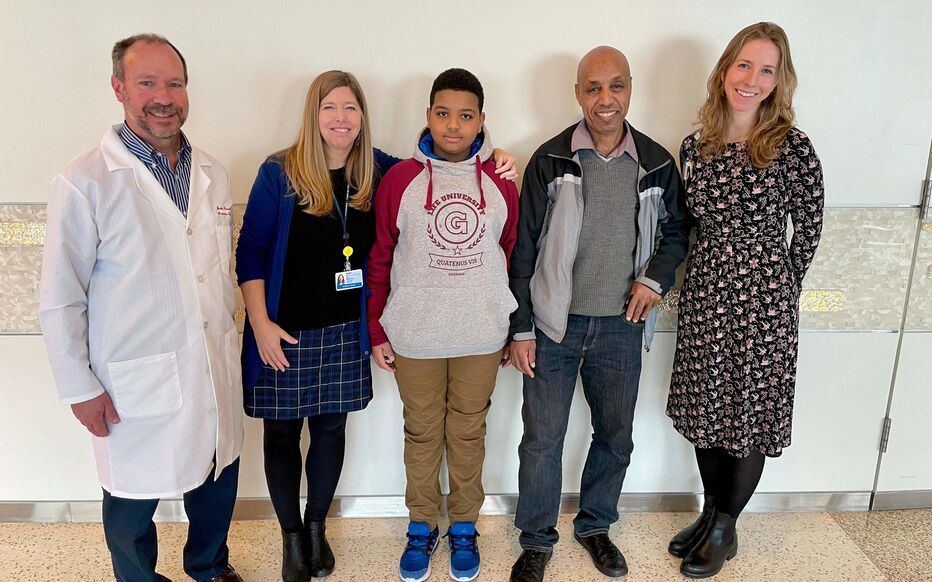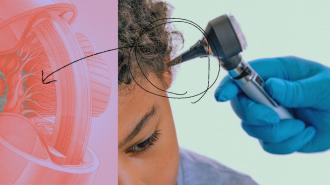An 11-year-old boy born with a rare form of genetic deafness was the first person in the world to receive a new gene therapy designed to treat his condition — and within days of undergoing the procedure, he was hearing sounds for the first time in his life.
The challenge: Every year, about 3,000 babies in the US are born with permanent hearing loss due to a genetic mutation. In rare cases, that mutation is in the gene that codes for the otoferlin (OTOF) protein, which helps hair cells in the ear send signals to the brain.
Cochlear implants can help children with this form of genetic deafness cope with their condition, but they can’t reverse their hearing loss or give the kids the ability to hear the full range of possible sounds.
“There’s no sound I don’t like. They’re all good.”
Aissam Dam
The gene therapy: On October 4, 2023, a team at the Children’s Hospital of Philadelphia (CHOP) delivered a gene therapy containing unmutated copies of the OTOF gene directly into the inner ear of Aissam Dam, an 11-year-old boy born in Morocco and currently living in Spain.
Aissam was born completely deaf due to an OTOF mutation and had never had a cochlear implant, meaning he had never heard anything before. Within days of the treatment, though, he could hear the sound of traffic, and he now has just mild to moderate hearing impairment in the treated ear.
“There’s no sound I don’t like,” Aissam told the New York Times using Spanish Sign Language and the help of interpreters. “They’re all good.”

While Aissam can now hear a symphony of sounds, he may never be able to understand or speak verbal languages — John A. Germiller, the doctor who led the CHOP study, told the NYT that the brain loses the ability to learn spoken language around age 5. If you miss that critical window for a first language, it’s extremely hard to learn any spoken language.
Still, the level of hearing Aissam now has could let him know if someone is trying to get his attention, alert him to dangers (like smoke alarms or approaching vehicles), and make it easier for him to read lips.
Looking ahead: Akouos, a subsidiary of Eli Lilly, developed Aissam’s gene therapy, called AK-OTOF. It has since been administered to a child in Taiwan, and the CHOP team has already chosen its next two trial participants, both of whom are 3 year olds born with genetic deafness in the US.
“As more patients at different ages are treated with this gene therapy, researchers will learn more about the degree to which hearing is improved and whether that level of hearing can be sustained over many years,” said Germiller.
“These initial results show that [gene therapy] may restore hearing better than many thought possible.”
John A. Germiller
The big picture: While Aissam was the first person to receive AK-OTOF, other gene therapies are successfully treating genetic deafness, too.
Two teams in China are developing their own OTOF-targeting gene therapies — one has restored hearing in five out of six trial participants, and the other gave two children the ability to hear. A gene therapy developed by Regeneron Pharmaceuticals, meanwhile, has restored hearing in one toddler with deafness due to an OTOF mutation.
The fact that these gene therapies can reverse hearing loss caused by problems with the OTOF gene suggests the approach might be effective against other, more common types of genetic deafness, too.
“Gene therapy for hearing loss is something physicians and scientists around the world have been working toward for over 20 years,” said Germiller. “These initial results show that it may restore hearing better than many thought possible.”
We’d love to hear from you! If you have a comment about this article or if you have a tip for a future Freethink story, please email us at [email protected].






